Una Polilla intensamente hermosa / An intensely beautiful moth
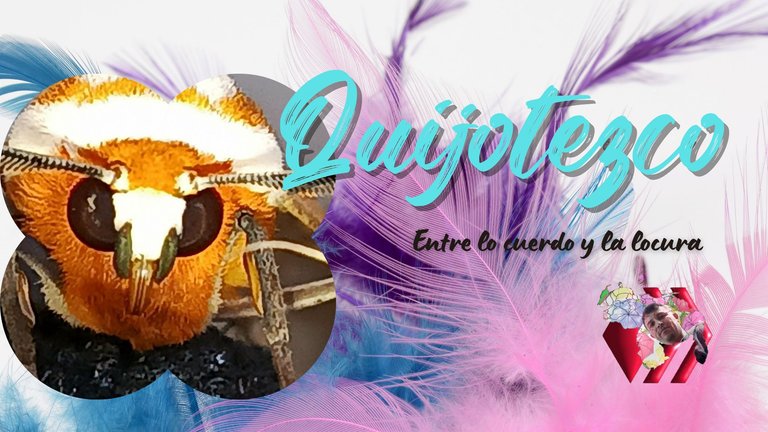

Bienvenidos

Welcome
Feliz inicio de semana para tod@s!!
Les comento que he estado un poco desconectado de este grato espacio por razones de trabajo y estudio, que me han quitado un poco de tiempo para invertir en la escritura sobre la vida y la naturaleza, sin embargo he destinado un tiempo para escribir historias y cuentos para niños y adolescentes, que pronto pueda estar publicando.
Me he enfocado en un diplomado de formación docente universitaria multimodal, que culmine con éxito y estoy en una maestría sobre ecología para el desarrollo humano, lo cual también amerita que le dedique tiempo, ya que debo preparar dos ensayos de investigación para revistas arbitradas.
En una de esas sentadas de estudio, leyendo un libro sobre Desarrollo Sustentable, una polilla que andaba revoloteando por la casa, se posó sobre mi suéter, sacándome de mi lectura, por lo que me concentre en ella por un buen rato, deleitándome de su comportamiento y su taxonomía.
Me llamo la atención la docilidad y su colorido, un anaranjado intenso con franjas blancas. Tenía una vellosidad abundante y sus antenas eran como un peine de cerdas finas. Sus alas no tenían un color llamativo pero eran fuertes, se le notaban las ramificaciones como si fuese una hoja, tenía ojos negros redondos y grandes. Sus extremidades eran largas y su boca era una espiral larga.
Al indagar en la web sobre quien era este insecto, pude encontrar una coincidencia con la especie Amastus (ver: https://en.wikipedia.org/wiki/Amastus), de la cual no se tiene mayor información, sin embargo existen diversidad de polillas de esa misma especie con variedad de géneros que son por demás interesantes, unas más hermosas que otras por su colorido.
Forma parte de la familia Erebidae y es un género de lepidópteros nocturnos tal y como lo menciona (https://es.wikipedia.org/wiki/Erebidae). Se caracteriza por tener su cuerpo muy peludo y con colores vibrantes, que en este caso naranja intenso que se observa en las imágenes. Su presencia en diversas partes de América Latina despierta el interés de entomólogos y amantes de la biodiversidad y sobre todo de este tipo de polillas.
Es robusta, con alas cubiertas de una especie de escamas y sus antenas son plumosas. Su ciclo de vida incluye una fase larval como oruga, en la que se alimentan de hojas y otros organismos vegetales antes de transformase en adultos capaces de volar. Algunas especies dentro de este género han sido objeto de estudios taxonómicos debido a su similitud con otros grupos de polillas.
Ellas prefieren los hábitats boscosos y húmedos (ver: https://en.wikipedia.org/wiki/Amastus_collaris), y es precisamente donde vivo, a pie de montaña con un bosque de pinos. Además pueden camuflarse entre la vegetación por su colorido. Su actividad es nocturna, lo que les permite evitar depredadores y encontrar pareja para la reproducción. Comúnmente donde hay viviendas ellas se acercan a las lámparas y luces encendidas.
Este tipo de polilla desempeña un papel crucial en la polinización y en la cadena alimenticia. Son presa de aves, murciélagos y otros insectívoros, contribuyendo al equilibrio natural. Además, sus larvas pueden influir en la dinámica de las plantas al consumir hojas y tallos, lo cual es importante.
Hay que destacar el hecho que su coloración puede servir como advertencia para posibles depredadores, indicando toxicidad o mal sabor.
Algo que realmente me llamo la intención al indagar sobre ella, es que en ciertas culturas, las polillas nocturnas están asociadas con mitos y supersticiones sobre la transformación y el misterio de la noche. (ver: https://www.lapatria.com/medioambiente/polillas-mas-alla-de-las-supersticiones-conozca-su-importancia-y-diversidad)
Acá les dejo para los amantes de la naturaleza esta hermosa polilla capturada en imágenes.
Happy beginning of the week to all of you!
I have been a little disconnected from this pleasant space for work and study reasons, which have taken me a little time to invest in writing about life and nature, however I have set aside some time to write stories and tales for children and adolescents, which I will soon be publishing.
I have focused on a multimodal university teacher training course, which I successfully completed, and I am in a master's program on ecology for human development, which also requires me to dedicate time to it, since I must prepare two research essays for peer-reviewed journals.
In one of those study sessions, reading a book on Sustainable Development, a moth that was fluttering around the house, landed on my sweater, taking me out of my reading, so I concentrated on it for a while, delighting in its behavior and taxonomy.
I was struck by its docility and its coloring, a deep orange with white stripes. She was abundantly hairy and her antennae were like a fine bristle comb. Its wings were not a striking color but they were strong, its branches were noticeable as if it were a leaf, it had large round black eyes. Its limbs were long and its mouth was a long spiral.
When researching on the web about who this insect was, I could find a coincidence with the Amastus species (see: https://en.wikipedia.org/wiki/Amastus), of which there is no more information, however there are a diversity of moths of the same species with a variety of genera that are very interesting, some more beautiful than others for their colorfulness.
It is part of the family Erebidae and is a genus of nocturnal lepidoptera as mentioned (https://es.wikipedia.org/wiki/Erebidae). It is characterized by its very hairy body and vibrant colors, which in this case is the intense orange seen in the images. Its presence in various parts of Latin America arouses the interest of entomologists and lovers of biodiversity and especially of this type of moths.
It is robust, with wings covered with a kind of scales and its antennae are feathery. Their life cycle includes a larval stage as a caterpillar, in which they feed on leaves and other plant organisms before transforming into adults capable of flight. Some species within this genus have been the subject of taxonomic studies due to their similarity to other groups of moths.
They prefer wooded and humid habitats (see: https://en.wikipedia.org/wiki/Amastus_collaris), and this is precisely where I live, at the foot of a mountain with a pine forest. They can also camouflage themselves among the vegetation because of their coloring. Their activity is nocturnal, which allows them to avoid predators and find mates for reproduction. Commonly where there are dwellings, they approach lamps and lighted lights.
This type of moth plays a crucial role in pollination and in the food chain. They are prey for birds, bats and other insectivores, contributing to the natural balance. In addition, their larvae can influence plant dynamics by consuming leaves and stems, which is important.
It should be noted that their coloration can serve as a warning to potential predators, indicating toxicity or bad taste.
Something that really caught my attention when researching about it, is that in certain cultures, night moths are associated with myths and superstitions about the transformation and mystery of the night (see: https://www.lapatria.com/medioambiente/polillas-mas-alla-de-las-supersticiones-conozca-su-importancia-y-diversidad).
Here I leave for nature lovers this beautiful moth captured in images.


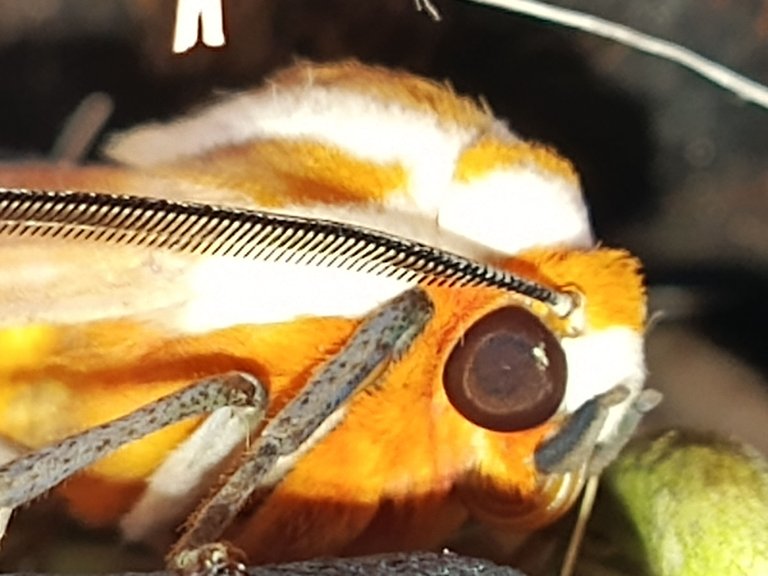
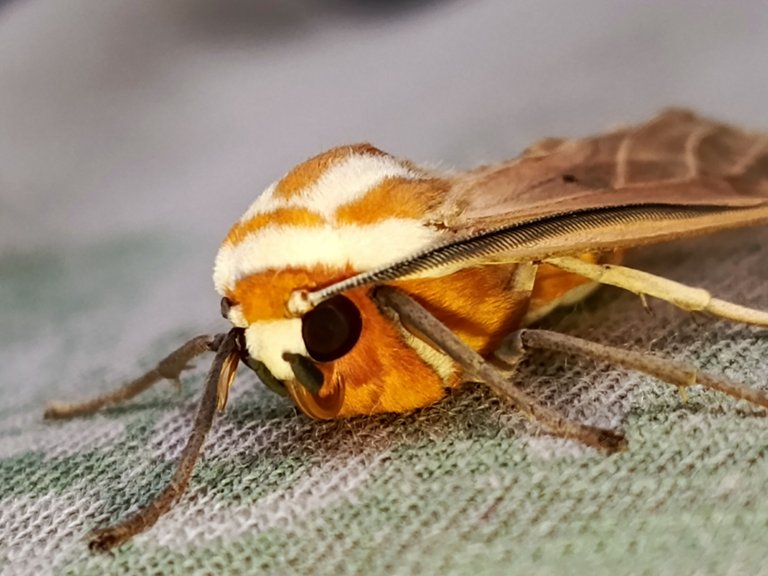
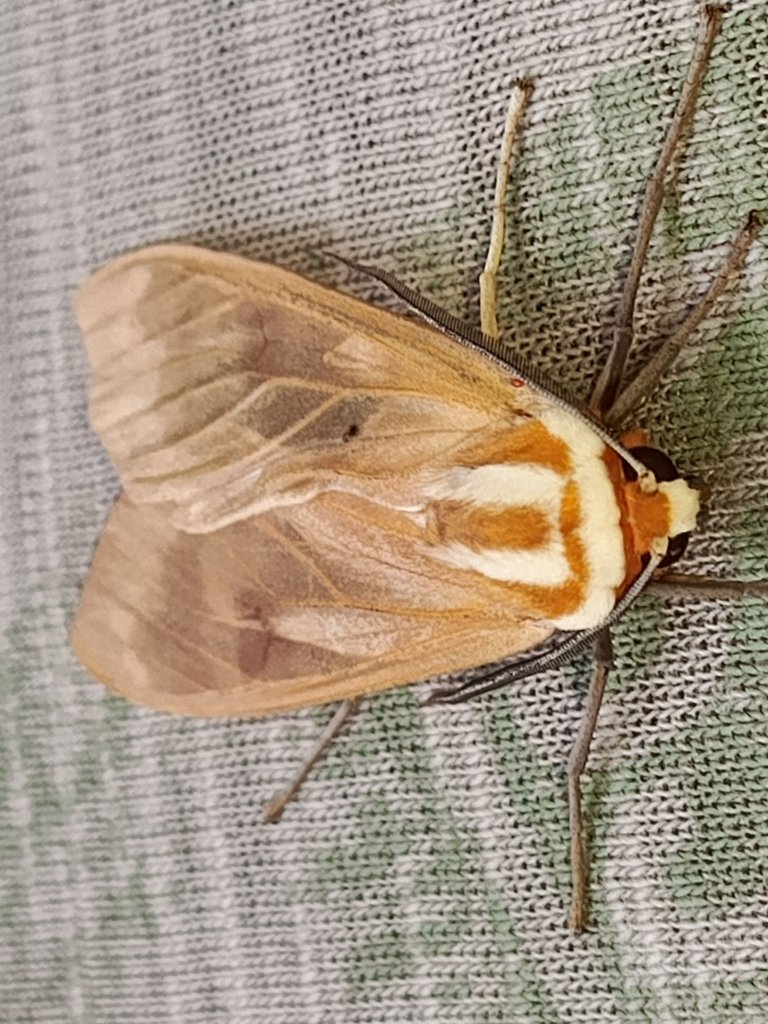
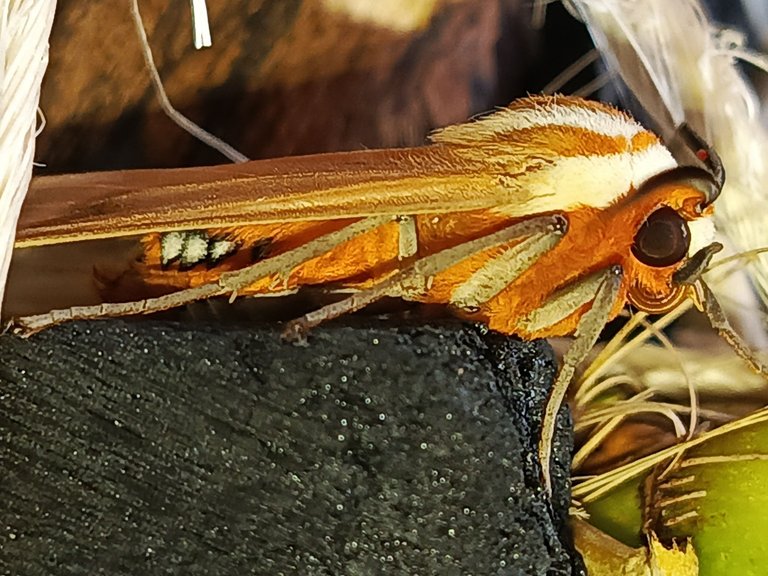

Gracias por leer y votar este post...
Un abrazo!
Hasta otra oportunidad!

Thank you for reading and voting this post...
A hug!
See you again!
La imagen principal del post fue creada editada con Canva
The main image of the post was created and edited with Canva.
Los separadores fueron hechos con Canva.
The dividers were made with Canva.
Para este post me apoye en Translated with www.DeepL.com/Translator (free version)
For this post I relied on Translated with www.DeepL.com/Translator (free version)
Nota: todas las imágenes son de mi propiedad, tomadas con mi movil Mi 11 Lite
Note: all images are my property, taken with my Mi 11 Lite mobile phone.

Please include the bibliographic references. The moderator made that correction in the last post. Failure to comply with that rule warrants the withdrawal of membership and silencing of posts. When you make the correction, the silence is removed
Hello!... I have already included the references where I read about this beautiful night moth....
thank you!